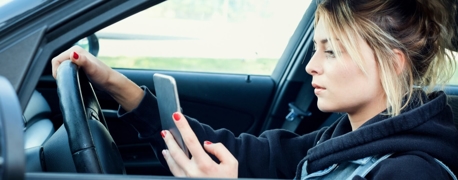5 Most Dangerous Private or Charter Bus Companies

Bus companies provide a service that isn’t viable for rental car companies, rideshare apps, or even small airlines: hyper-affordable intercity travel, particularly for commuters or large groups traveling together. However, the margins of running a bus company sometimes incentivize cutting costs, reducing hiring of skilled drivers, lowering investment in adequate maintenance, and other vital safety issues.
There are high stakes to corner-cutting; after all, a typical coach bus can transport up to 57 passengers. A crash with that many people often leads to catastrophic injury or harm.
In 2023, an Ohio charter bus crash killed six people, including three high school students. The fatalities in this crash were in part caused by a chain reaction involving a speeding semi-truck and multiple commuter vehicles. The crash caused a fire that engulfed the rear of the charter bus, a combination vehicle, and a CRV belonging to a chaperone.
These are far from the only incidents in recent years; Ohio alone has seen multiple bus crashes on major highways. Other states have their own dark history of poor bus safety: in 2016, a tour bus crash in California killed 13 people and injured 30 others; the bus driver (who also owned the company) had been sleeping poorly. His bus was not equipped with seatbelts.
Federal Regulation of Bus Companies & Safety Records
In order to operate in America, bus companies are required to pass regular inspections and comply with safety standards that govern (among other things) how long a driver can remain behind the wheel, what kind of drivers companies can hire, and how often buses must receive maintenance. All of this is enforced by the Federal Motor Carrier Safety Administration (FMCSA), the same regulatory agency that oversees commercial trucking.
As part of its regulatory duty, the FMCSA publishes inspection results and crash records for all trucking companies and passenger carriers in the US. The FMCSA even encourages passengers to look up a bus company’s safety record before buying a ticket; the “Look Before You Book” campaign is putting bus safety in the spotlight for consumers.
However, it may not be enough.
The Biggest & Most Significant Bus Operators in the US
What we need is a close look at the largest bus operators in the US to determine which ones are failing to meet the standard passengers deserve. That’s what our team set out to do with this article, but we had to overcome a few obstacles in our way. One, bus companies are typically regional; in fact, there are very few nationwide bus services aside from Greyhound or Megabus. Two, there are no large-scale sources that track the size or output of bus service providers, unlike the watchdogs for the energy industry.
So we started with a list of major bus operators created by ComparaBUS, a service that connects travelers with affordable bus companies. This list included the most common and available bus operators in the country, which we used as a rough proxy for the “largest bus companies.”
The bus operators on that list included:
- Greyhound: The gold standard for American bus operators with 1,200 buses and 17.2 million passengers.
- Megabus: A relatively large bus service with lines between 50+ American cities.
- BoltBus: A cheap intercity bus carrier that is owned by Greyhound, which means it doesn’t have its own data in the FMCSA database.
- Lux Bus America: A coach bus service chiefly dedicated to bringing passengers to Las Vegas or Anaheim. It also provides tours, private bus rentals, and door-to-door service for hotels.
- Vamoose: Legally known as “DC Trails,” Vamoose provides routes between suburban Washington D.C. and New York. It chiefly advertises to business travelers.
- Red Coach: A premium bus service between major Florida cities. It now operates in Texas.
- Jefferson Lines: The oldest bus operator on this list, Jefferson provides services in 13 states in the South and Midwest.
- Peter Pan: Bus operator with lines between major East Coast cities in the Northeast, chiefly between Washington D.C. and New Hampshire. It’s mainly a service for commuters.
- FlixBus: A major European bus operator that entered the American market with its purchase of Greyhound in 2021. They have 1,200 buses in 26 countries with 60 million passengers.
You may notice that three of the companies on this list are owned by one another. BoltBus is owned by Greyhound, which in turn was bought by FlixBus in 2021. As a result, only Greyhound has a USDOT number and thus has data in the FMCSA database.
However, this list and the FMCSA Safety Measurement System (SMS) gave us enough to uncover the least safe bus operators in America.
How We Determined Unsafe US Bus Operators
The SMS provides a few key data points from the last 24 months of operation: number of inspections, number of inspections with violations, and total number of crashes.
Crashes are broken down into three classes: fatal crashes, injury crashes, or towaway crashes. A crash is classified according to the worst event associated with it; in other words, if a bus crash led to 1 fatality and 12 people getting injured, it would be classified as a fatal crash. If a crash led to 6 people getting injured and required towing, it would be classified as an injury crash.
There is a piece of data not included here: crash figures do not indicate the bus operator’s role in the crash; the number of crashes includes incidents where another vehicle was at fault. Given that large trucking companies are sometimes at fault for major bus crashes, crash data doesn’t provide a completely accurate look at how safe a bus operator is.
Instead, we looked at inspections with violations.
The number of failed inspections over the last two years provides a much more accurate look at how safe a bus operator is; after all, the more violations a company commits, the more likely it is they’ve cut corners and put passengers at risk.
The 3 Most Unsafe Bus Operators in the US by Safety Violations
Looking at the inspection data for the seven bus operators in the SMS database, there were four companies that had a violation rate in the double-digit range. Of those four operators, only three provided bus services in three or more states, presenting the largest likelihood that passengers would end up buying a ticket from them eventually.
The three most dangerous bus operators in the US are (in ascending order):
- Greyhound: By far the largest operator, it still had a violation rate of 14.7%, or roughly 1 in 7 inspections.
- Megabus: This bus operator had violations in 14 of its last 62 inspections. That’s a failure rate of 22.7%, or just over 1 in 5.
- Jefferson Lines: This bus operator has had violations in 10 of its last 33 inspections—a violation rate of 30.3%, just under 1 in 3.
While each of these companies had vastly different numbers of inspections over the last 24 months, it’s important to note that the failure rate is fully in the hands of the bus company owners. It’s possible—and in fact, ethically and legally necessary—for the owners of Jefferson Lines to pass inspection on all 90 of its vehicles for two years. As far as we know, the failed inspections may not provide the full picture of safety violations committed by management.
The 3 Most Unsafe Bus Operators by Crash Rate
It’s worth noting that all of these bus operators have had multiple bus crashes with injuries over the last 24 months. While Jefferson has only had 2 injury crashes (compared to Megabus’ 4 or Greyhound’s 37 in the same period), Jefferson only operates 90 vehicles. With that in mind, we thought it might be worth looking at these same companies with a different lens: relating the number of crashes to the number of vehicles they operate.
Using that metric, the bus operators with the highest crash rate were:
- Greyhound once again at 8.7% (80 reportable crashes with 923 vehicles)
- Peter Pan Bus Lines at 9.7% (10 reportable crashes with 103 vehicles)
- Red Coach at 21%, far and away the worst crash rate of any bus operator (4 crashes with 19 vehicles)
Though crash data includes incidents that may not be the operator’s fault, seeing crashes compared to the number of vehicles they operate offers a more accurate view of the company’s safety policies. It’s bad luck to be struck by another vehicle; it’s a pattern if a company is in a high number of accidents with only a few vehicles.
What About Employees of Unsafe Bus Companies?
The only bus employee on a charter bus is the driver, and typically the driver is the one held responsible for an accident—even though it's also true that bus drivers often incur the worst physical toll from an accident involving the front of the bus. However, the entity most responsible for a given accident is ultimately the company, whose hiring, staffing, and rest policies are the central factors in any accident. If a bus driver is made to drive for long hours without adequate breaks or rest time, then it shouldn't be solely on the driver's shoulders if they make a mistake on the road.
If a company is prone to unsafe policies and a poor safety record, the driver is also at risk. It follows that drivers should take this information to heart as well. Working for a company that has a high crash rate or poor safety record will lead to harm, one way or another. It's as important to drive for a safe company as it is to ride with one.
What We Can Do With This Information
With these two lists, we have five of the worst bus companies in America, including one company that was included with both metrics: Greyhound. So what next? Unfortunately, Greyhound is in its own class compared to other private bus operators. A passenger might have options for a trip to another city a few hours away, but Greyhound is the only option for people looking to travel across the country via bus.
The best that passengers can do is remain vigilant and support efforts to force these companies to take safety seriously. In the meantime, Arnold & Itkin will continue to do our part in uncovering how these companies are doing their duty to passengers and motorists.


